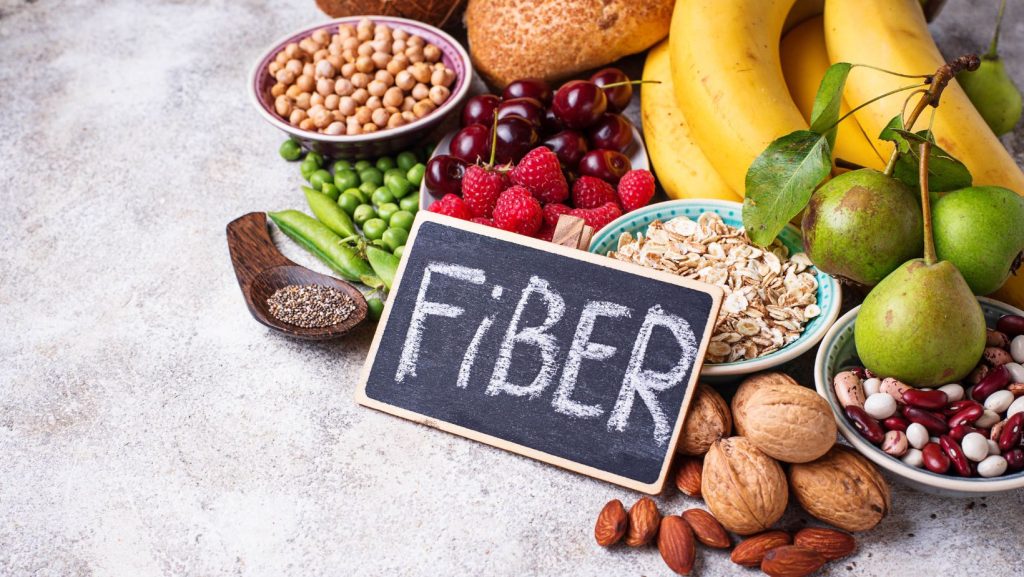
In the realm of nutrition, fiber often takes a back seat to macronutrients like proteins, fats, and carbohydrates. However, the importance of fiber in maintaining optimal health cannot be overstated. Fiber is a non-digestible carbohydrate found in plant-based foods that plays a crucial role in digestive health, weight management, and disease prevention. In this blog, we’ll delve into the various aspects of fiber, exploring its types, sources, and the multitude of benefits it brings to a healthy diet.
Understanding Fiber
Fiber is a complex carbohydrate that the body cannot digest or absorb. Unlike other carbohydrates, which are broken down into sugars, fiber passes through the digestive system relatively intact. There are two main types of fiber: soluble and insoluble.
- Soluble Fiber: This type of fiber dissolves in water and forms a gel-like substance. It can help lower blood cholesterol levels and stabilize blood sugar. Foods rich in soluble fiber include oats, beans, lentils, fruits, and vegetables.
- Insoluble Fiber: Insoluble fiber does not dissolve in water and adds bulk to the stool. It promotes regular bowel movements and helps prevent constipation. Whole grains, nuts, seeds, and the skins of fruits and vegetables are good sources of insoluble fiber.
Both types of fiber are essential for maintaining a healthy digestive system and supporting overall well-being.
The Benefits of Fiber in a Healthy Diet
- Digestive Health
Fiber plays a crucial role in maintaining a healthy digestive system. Insoluble fiber adds bulk to stool, preventing constipation and promoting regular bowel movements. On the other hand, soluble fiber helps soften stool and can be beneficial for individuals with diarrhea. A well-balanced intake of both types of fiber contributes to a healthy and efficient digestive process.
- Weight Management
Fiber-rich foods are often low in calories and high in volume, providing a sense of fullness and satiety. By promoting a feeling of fullness, fiber can help control appetite and reduce overall calorie intake. Including fiber in meals can be a helpful strategy for those looking to manage their weight or lose excess pounds.
- Blood Sugar Control
Soluble fiber has been shown to slow the absorption of sugar, helping to regulate blood sugar levels. This can be particularly beneficial for individuals with diabetes or those at risk of developing the condition. Foods like oats, legumes, and certain fruits are excellent sources of soluble fiber that can contribute to better blood sugar control.
- Heart Health
Fiber has a positive impact on heart health by helping to lower cholesterol levels. Soluble fiber binds to cholesterol particles in the digestive tract, preventing their absorption into the bloodstream. This, in turn, can reduce overall cholesterol levels and lower the risk of heart disease.
- Colon Health
A high-fiber diet is associated with a lower risk of colorectal cancer. The fermentation of fiber in the colon produces short-chain fatty acids, which have been shown to have protective effects against colorectal cancer. Additionally, the bulking effect of insoluble fiber helps move waste through the digestive tract efficiently, reducing the time that harmful substances are in contact with the colon lining.
- Blood Pressure Regulation
Some studies suggest that a diet rich in fiber may contribute to lower blood pressure. Soluble fiber may play a role in this by promoting relaxation of the blood vessels and improving blood flow. Maintaining healthy blood pressure levels is crucial for cardiovascular health and reducing the risk of heart disease.
- Blood Lipid Levels
In addition to its cholesterol-lowering effects, fiber can positively influence other blood lipid levels. High-fiber diets have been associated with lower levels of triglycerides, another type of fat in the blood. By modulating lipid levels, fiber contributes to a healthier cardiovascular profile.
- Regulation of Inflammation
Chronic inflammation is a factor in many chronic diseases, including heart disease and certain cancers. Some studies suggest that fiber may play a role in reducing inflammation in the body. A diet rich in fruits, vegetables, whole grains, and legumes—all excellent sources of fiber—can contribute to an anti-inflammatory effect.
Practical Tips for Increasing Fiber Intake
- Choose Whole Grains: Opt for whole grains like brown rice, quinoa, whole wheat, and oats instead of refined grains. Whole grains contain more fiber and essential nutrients.
- Eat Plenty of Fruits and Vegetables: Incorporate a variety of colorful fruits and vegetables into your meals. These foods are rich in fiber, vitamins, and antioxidants.
- Include Legumes: Beans, lentils, and chickpeas are excellent sources of both soluble and insoluble fiber. They can be added to salads, soups, or main dishes for a fiber boost.
- Snack on Nuts and Seeds: Almonds, chia seeds, flaxseeds, and sunflower seeds are great snacks that provide a good dose of fiber and healthy fats.
- Choose High-Fiber Snacks: When reaching for a snack, choose options like fresh fruit, vegetable sticks, or whole-grain crackers with hummus to increase your fiber intake.
- Leave the Skin On: When appropriate, leave the skin on fruits and vegetables. The skin is often rich in fiber and other nutrients.
- Be Mindful of Portion Sizes: While fiber is beneficial, it’s essential to be mindful of portion sizes, especially if you’re increasing your fiber intake. Gradually introduce fiber-rich foods to allow your digestive system to adjust.
- Hydrate Adequately: Drinking plenty of water is important when increasing fiber intake. Water helps move fiber through the digestive system and prevents constipation.
- Read Food Labels: Check food labels for the fiber content of packaged foods. Choose products with higher fiber content and fewer added sugars.
- Experiment with Whole Foods: Explore a variety of whole foods in their unprocessed form to maximize fiber intake. Fresh fruits, vegetables, and whole grains should be staples in your diet.
Conclusion
In the journey to a healthier lifestyle, the role of fiber in a balanced diet cannot be overlooked. From promoting digestive health to aiding weight management and reducing the risk of chronic diseases, fiber is an indispensable component of a nutritious eating plan. By incorporating a variety of fiber-rich foods into your meals, you not only support your physical well-being but also cultivate habits that contribute to long-term health. So, savor the flavors of colorful fruits, crisp vegetables, and hearty whole grains as you embrace the fiber factor on your path to a healthier, more vibrant life.





